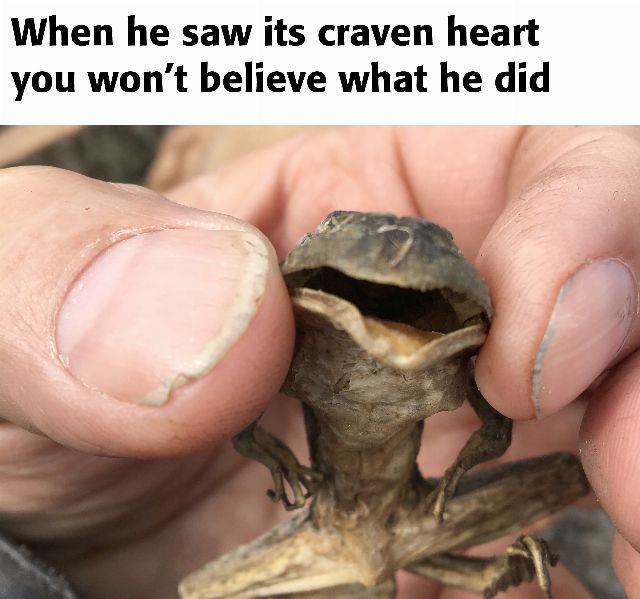
I don't have a special interest in doing topical art. But I do have a great interest in communication; the way we take in symbolic clues and assemble meaning from them. And, building art that uses this communication mechanism, what are the limits to the transmission of an experience, one rich with nuanced connections, emotional overtones, and paradox?
Topical or political art presents special problems to an artist that wants to promote a specific viewpoint. In the United States of the early 2000's, no political or social topic appears to be free of strongly antagonistic factions. And to have value, one might argue that 'opinion art' must go far beyond comforting the existing congregation. It should gain new adherents. No trivial task.
Embracing The Possibility Of Binary Interpretation
In 2016 I was participating in a mini-book exchange project that required several books over the course of the year. I came up with a punch-line book I thought would serve as one entry, The Global Warming Survival Kit. Clearly a piece with political overtones.
To me, the obvious inadequacy of the kit's content (depicted on the panels) lampooned climate change skeptic attitudes. And the final "Plan B" card revealed my belief about the true philosophy and delusion of those who mock and dismiss the evidence; aggression and a willingness to act violently will allow them to prevail; society can devolve as long as 'I' am secure; notions of community and social justice will be narrowed or discarded where expedient.
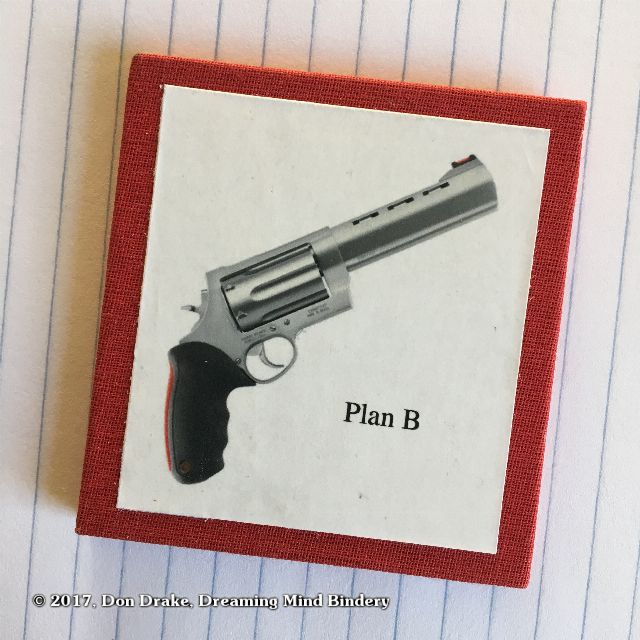
As I worked on the piece and ran my 'audience scenarios' to resolve the content by trying to estimate a range of responses I realized my negative critique interpretation was entirely dependent on where one stood on the climate change issue. If a viewer rejected the idea of man made climate change, the items in the kit would appear amusing; an entirely appropriate 'preparation' for a non-threat. The final card could be seen as a joke targeting the alarmist buffoons and their silly sensitivity. Or as a perfectly right and effective, general purpose Plan B in any case.
I ended up embracing this dual interpretation as a fundamental part of the work. To me, this superposition of meaning is a fascinating and unexpected aspect.
Striving For A Shared Experience
I'm currently working on another topical piece which is a response to the the October 2017 Harvey Weinstein story and the social medial #MeToo campaign that re-surfaced in response. In this case I want press for a range of reader experiences and exclude the ambiguity of The Global Warming Survival Kit.
The intended interpretation of this piece rests in a dual meaning of the title 'Nothing To See Here' in relation to the image and text content (screen captured click-bait modules).
One meaning is as an instruction to potential consumers of the click-bait in it's original form; the promised imagery and information is rarely delivered and when it is, is without value or results in a net diminishment of the viewer's character.
The other meaning is an indictment of the consumer. This interpretation rests on this chain of facts and reasoning:
At all levels of society including our justice system, we have failed to address or even acknowledge the linked problems of sexual assault and gender inequality arising from gender stereotyping. Our overall response to these problems has to excuse the perpetrators, blame the victims, or deny the problem exists. In the face of that failure, the victims of these abuses are asserting the reality and magnitude of the problem through the #MeToo campaign, a difficult action by which they risk further victimization or dismissal. All this takes place in a media environment filled with evidence that the problems exist and are ubiquitous. We don't have to look far for published content that openly acknowledges and leverages the attitudes that prove the problems are real; the click-bait screen captures used in the book are only one example. But we, as a culture, fail to see this evidence for what it is thus making the #MeToo campaign an unhappy requirement.
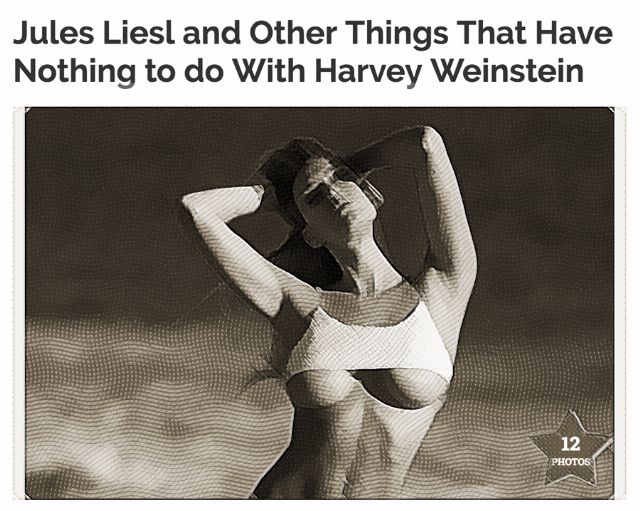
Depositing Clues For Assembly of Meaning
The interesting puzzle for me is creating a work that can bring the viewer to the general outlines of the intended interpretation (allowing for individual differences) with the minimum of explicit direction.
First Draft
My first draft of Nothing To See Here was not fully resolved but I wanted to get a read on how likely the content in its most minimal form was to yield the experience I was aiming for.
I sent the draft to two art colleagues and chose women because they would be familiar with the topic in ways I can't be, and were likely to be highly critical of a man's entry in the topic-space.
Content clues to aid the reader were extremely thin. I expected that an effort to find a meaningful connection between the title and interior components might be enough to trigger the discovery of one or both intended meanings. The deep irony of the Jules Liesl legend and the overt attempt to further exploit the victim in the Jennifer Lawrence page would, I hoped, create an conceptual armature allowing the sarcasm of the title to come into view, thus increasing the likelihood the reader would discover the 'indictment' meaning. I anticipated failure, but already had several edits and changes in mind.
Failure was exactly what I got but much worse than I thought. One of my reviewers found nothing of my intent. The other, after several days, hadn't respond at all. I took this to mean her interpretation was so negative she didn't know what to say. A little further from the mark than I'd hoped.
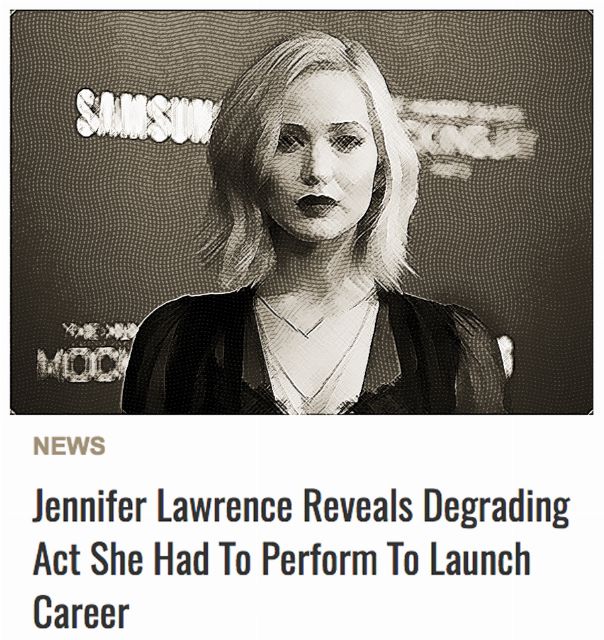 .
.
In this version, the images had all been neutralized and filtered to make them look a bit like old engravings (but not very effectively). This had been a tentative step toward framing the book a bit like an 18th century pamphlet.
Based on the failure of my first draft, I expanded the content in this direction. The reference to the belief that these attitudes and behavior are (or should be) antique artifacts and the connection between the way access to the printing press and access to digital publishing relate, are minor parts of the book, but the device gave me the context for the use of an old-style lengthy subhead.
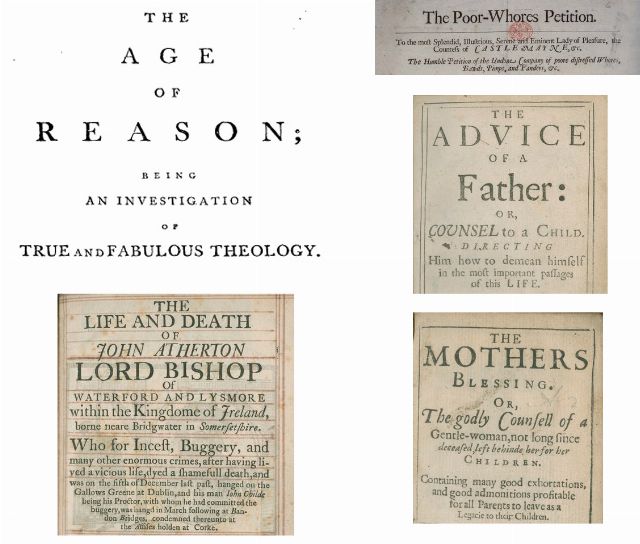
Examples of pamphlet titles from the 17th and 18th century.
Second Draft
In addition to using this lengthy titling style to help orient the reader I thought I could explicitly mention the #MeToo campaign in a dedication. In this way I could both orient the reader to an important additional set of ideas and further anchor the piece in this specific moment when historical circumstances made this (in my opinion) a relevant work.
I made my revisions. The images were all modified to have more of the character of engravings (see sample pages above), the dedication "Dedicated to the people of the #MeTo campaign proclaimed and unproclaimed" was added, and the title was expanded to better aim (but not specifically direct) the reader as shown below.

I solicited some new critiques... and the project was more comprehensively panned that the first draft.
Though I worked hard to remove ambiguity from the subtitle, new unanticipated ambiguity crept in. This led one reviewer to opine that our cultural understanding of these problems is so poor that even my book suggesting 'sex sells' might be useful to some. I'm going to need to edit a bit more.
Going beyond the title, there's always a difficulty in getting the text content in a book-art work read. And as I detailed earlier, the text in several of the modules provide critical clues to the reader. Some reviewer comments suggest this text is not being read at all. The reviewers may have seen the images, then immediately classified and dismissed the content as they would if encountering it online. This process would turn me into another publisher of the offensive content rather than a critic. A serious potential failure of the work that needs some thought.
A Third Draft?
An artist who doesn't have confidence in their own vision can't last long. And insecurity and political art don't mix at all. I will almost certainly complete this piece in something close to its current form, though I did receive several suggestions for how it should be recast to become relevant (or at least inoffensive).
It seems clear to me at this point that decontextualizing the click-bait images, disabling their function of allowing people to 'harmlessly' indulge their base urges, did not de-fang the beasts. Still it seems important that we learn to see these modules for what they are rather than as amusements and entertainments. Recasting them in this new context, stripped of their operational linkages feels like a sound strategy to force new thinking about them. Avoidance or prohibition of content is not a cure. The cure is a new understanding. With this new understanding, the #MeToo campaign would become unnecessary.
Whether we're dealing with Confederate monuments or click-bait constructions that are expressions of an abusive mind-set I see the solution as the same. The way forward is not to erase evidence of an unsavory past, but to expose it to comprehensive and critical scrutiny. To label it for what it is. Then when it is again encountered, we can see and understand.
